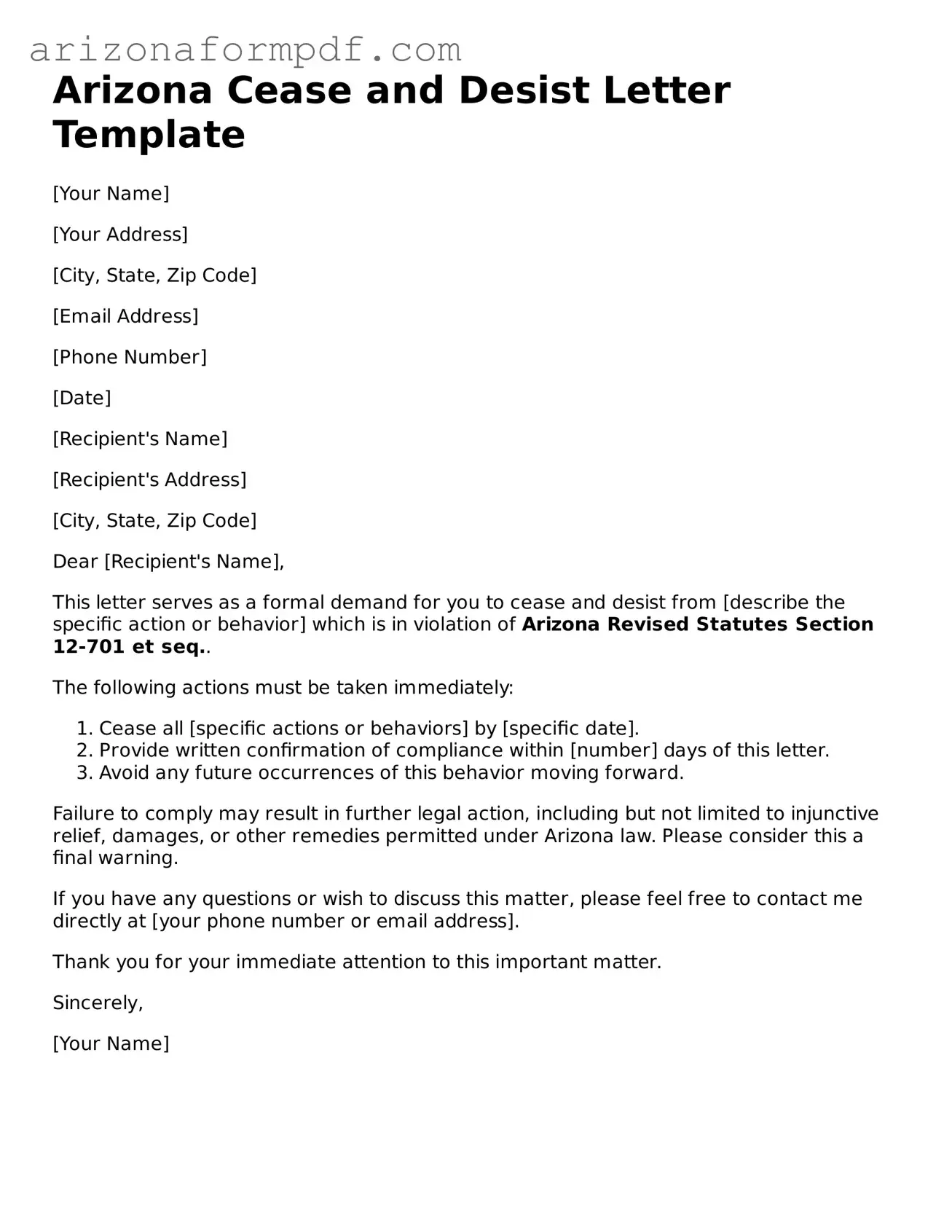The Arizona Cease and Desist Letter is similar to a Demand Letter, which serves as a formal request for action or cessation of behavior. A Demand Letter typically outlines the grievances of the sender and specifies the desired outcome. Both documents aim to resolve disputes without resorting to litigation, emphasizing communication and negotiation. The Demand Letter, however, may not always carry the same legal weight as a Cease and Desist Letter, which explicitly warns of potential legal consequences if the recipient fails to comply.
Another document akin to the Arizona Cease and Desist Letter is the Notice of Violation. This notice is often used in regulatory contexts to inform individuals or businesses that they are not in compliance with specific laws or regulations. Like the Cease and Desist Letter, it seeks to prompt corrective action. However, the Notice of Violation usually comes from a government agency, while the Cease and Desist Letter can be sent by private individuals or entities. Both documents serve to alert the recipient to their non-compliance and encourage prompt resolution.
A third document is the Settlement Agreement. While a Cease and Desist Letter may initiate a conversation about resolving a dispute, a Settlement Agreement formalizes the terms under which both parties agree to resolve their issues. Both documents aim to prevent further legal action, but the Settlement Agreement is more comprehensive, detailing the obligations and rights of each party. The Cease and Desist Letter may lead to a Settlement Agreement if the parties reach an understanding.
The Arizona Cease and Desist Letter also shares similarities with a Non-Disclosure Agreement (NDA). An NDA is used to protect confidential information and prevent unauthorized disclosure. While the primary purpose of an NDA is to safeguard sensitive data, it may include clauses that require parties to cease certain actions, similar to a Cease and Desist Letter. Both documents serve to protect rights and interests, although their focus and context differ significantly.
A further comparable document is a Letter of Intent. This letter outlines the preliminary understanding between parties before entering into a formal agreement. It may include intentions to cease certain actions or behaviors, particularly in business dealings. While the Letter of Intent is often non-binding and serves as a precursor to more formal agreements, both it and the Cease and Desist Letter aim to clarify intentions and prevent misunderstandings.
Additionally, the Arizona Cease and Desist Letter is similar to a Warning Letter. A Warning Letter is typically issued to inform an individual or organization of a violation or misconduct, allowing them an opportunity to correct their behavior. Both documents serve as a means of communication before escalating to legal action. However, a Warning Letter may not always carry the same legal implications as a Cease and Desist Letter, which explicitly states the consequences of non-compliance.
Lastly, the Arizona Cease and Desist Letter can be compared to an Arbitration Demand. An Arbitration Demand initiates a process where parties agree to resolve disputes outside of court. While the Cease and Desist Letter seeks to stop certain actions, the Arbitration Demand is focused on resolving conflicts through a structured process. Both documents aim to avoid litigation, but they operate within different frameworks and contexts.
